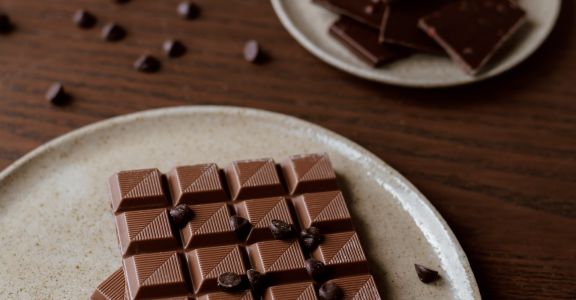Call me crazy, but I want food labels to tell me what’s really in the container. If I open a can labeled “chili con carne” and get sardines, I’m irritated. This sort of thing goes on under current labeling laws.
Take our beloved “chocolate.” Chocolate’s definition is strictly controlled by FDA. But, some products that don’t contain chocolate are formulated to taste like chocolate. Take chocolate diet drinks. It makes no sense putting high calorie chocolate in a lo-cal drink. These products are labeled “chocolate flavored.” So, here’s the first takeaway: If something is labeled “chocolate flavored,” you know it doesn’t contain chocolate.
A good place to test this is ice cream. To celebrate Saint Patrick’s Day, a company came out with “Belgian Chocolate Flavored Ice Cream.” So, now we know it doesn’t contain “Belgian Chocolate.” It might not even contain chocolate at all. What is it? I don’t know – – something that supposedly tastes like Belgian chocolate. Also, I don’t know that Saint Patrick ever made it to Belgium, so I’m not sure what the Saint Patrick’s Day tie-in is. Maybe they had some artificial Belgian chocolate flavoring laying around they needed to get rid of.
Pretty simple: “Chocolate” means “chocolate.” “Chocolate flavored” means something ginned up to taste like chocolate. Then, FDA blurred everything when it announced: “Products such as chocolate pudding, made from cocoa rather than chocolate, may be labeled as ‘chocolate pudding,’ because the consumer has long recognized that this product may be made from cocoa and does not expect it to contain chocolate.” Really? Everyone knows chocolate pudding doesn’t contain chocolate? Apparently, FDA’s “long recognized” it, so it’s OK for everyone else. FDA goes on to say the same thing applies to “chocolate cake, chocolate cookies, chocolate milk” and anything else “consumers have long recognized may be made from cocoa and do not expect to contain chocolate.”
I doubt most people know chocolate pudding, chocolate cake, chocolate cookies and chocolate milk don’t contain chocolate. But someone at FDA thinks they know, so the fairy tale that these products contain chocolate continues.
Why does this matter? Because chocolate is expensive and food companies would love to charge us chocolate prices for chocolate flavor.
If the labeling were truthful, it would say, “Does not contain chocolate, but tastes like chocolate.” We won’t hold our breath waiting for that one.
What’s a chocoholic to do? Answer: Don’t trust the front of the package. Flip it over and read the ingredients. If you see “chocolate” or “chocolate liquor” (same thing as chocolate), you’re OK. If you don’t see “chocolate” – – you know the rest.
This sort of thing comes past The Food Lawyers® all the time, and I’ll keep exposing it in this blog. I’ve got a long way to go before I run out of material.

